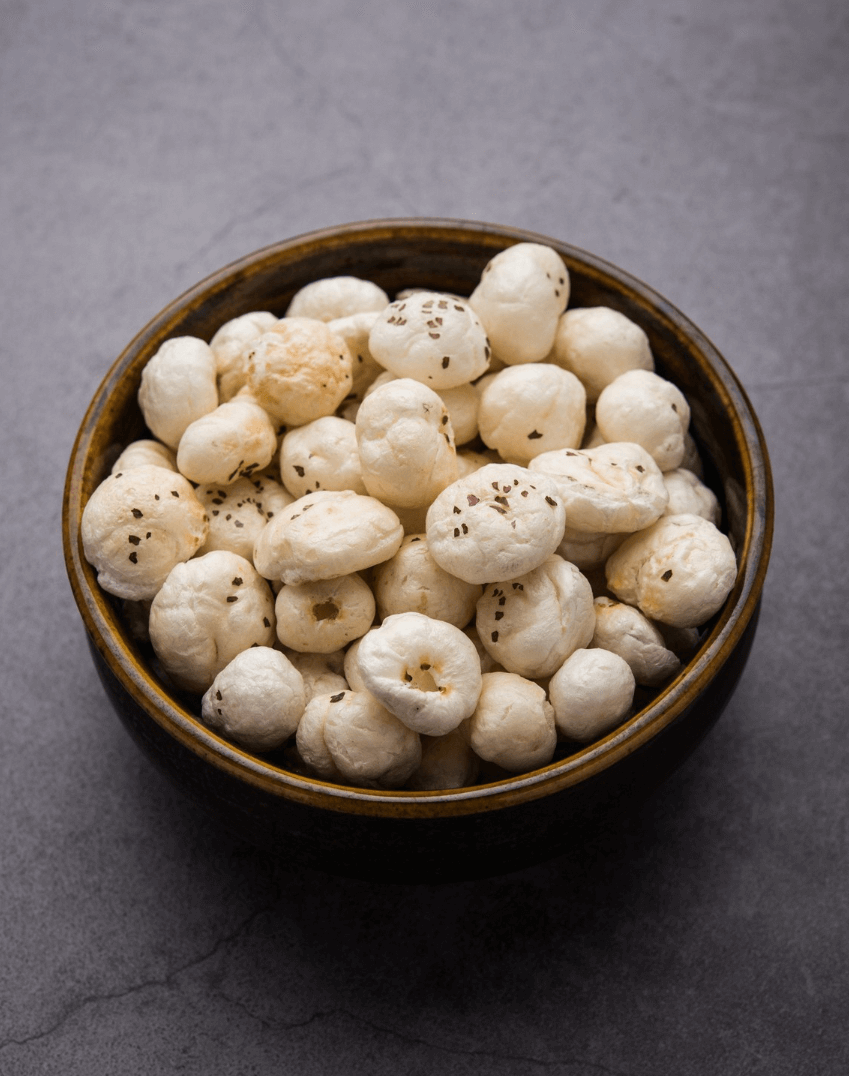- +033 2572 7171
- info@dhanvantary.com

4.5 Rating | 4500 Review

4.5 Rating | 4500 Review
In India, Bihar is the state which is the largest producer of Makhanas, these originated from the lotus seeds, the process of this plant is – it develops seed pods, and every pod has a round of 20 seeds that get mature in less than 40 days, then the seeds are kept dry and roasted on a fire flame, then its outer shell that is of black in colour starts to break and the white part that is inside that black shell starts to pop out. This white thing that is coming out of the shell is called Makhana. These have gained more admiration in recent years, as people have become more health conscious and started to take off their own bodies by taking natural plant-based products.

Makhana is a precious crop found in aquatic regions and is used in every Indian family as a snack. It is located in accumulated perennial water bodies and is used as a herb or a medicine that can cure various diseases. It is very effective in renal disorders, gastrointestinal tract disorders, or any type of female reproductive system disease. These are enriched with multiple nutrients and are filled with highly nutritional supplements like protein, phosphorus, and thiamine. It can be used after being fried in Cow ghee to enhance its nutritional supplements. Our mothers packed in our tiffin boxes like an excellent teatime snack. She also uses this by adding it in kheer, curry, raita, etc many dishes. In China, it is used as an ingredient in their soup. Makhana is also used in various religious rituals.
Botanical Name
Euryale ferox
Family
Nymphaeaceae
This is a stem less, aquatic plant, filled with thorns.
Its roots are thick and swollen,
Its leaves are 1-4 ft. in diameter, and are circular in shape, with thorns, green from the upside and red or purplish in color from the downside.
Its Flowers are 1-2 inches tall in height and are green in color and are red and blue in color.
Its fruits are round and circular in shape and are of the size of an orange.
Its plant got ready in January-February and the fruit ripened up to the time of May-June.
It is specifically found in northern Bihar state and in the ponds of Bengal and can also be found somewhere in Northern India.
5-10 grams
It can be consumed like these seeds are set on the fire flame and are being roasted which helps them to open up like popcorns by breaking out their shells. Then it can be mixed with some Cow ghee and some essential spices like pepper or salt.
Some people just cook the soup of its seeds by boiling it in water with adding some of the spices to enhance its taste.
